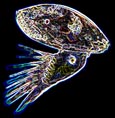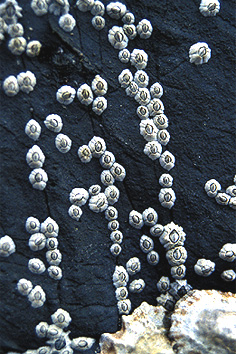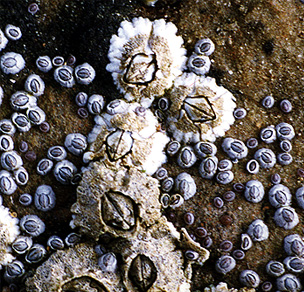


|
And this creature, rooted to one spot through life and death, was in its infancy a free swimming animal, hovering from place to place upon delicate ciliae, till, having sown its wild oates, it settled down in life, built itseif a good stone house, and become a land owner, or rather a glebae adscriptus, for ever and a day. Mysterious density ! (Charles Kingsley, Glaucus, 1855)
Barnacles are well-known intertidal organisms. Generally, adults have a cone shaped shell-wall, a few to 30 mm in diameter, comprising a number of calcareous pates, adhere to rocks, and are immobile. The opening at the top of the 'cone' is diamond-shaped, and can be covered by movable plates when the tide goes out. This protects the animal inside from desiccation. They were not firmly accepted to be crustaceans until the 1830s; before this time, the calcareous shell and sessile habit of the adults resulted in confusion with molluscs. But when the larva of the barnacle was observed for the first time, their true nature became visible. Our current knowledge of barnacles is largely based on an 8-year period of research by Charles Darwin. |
|||

